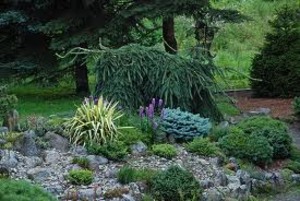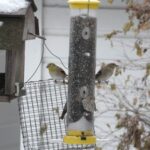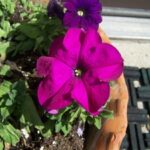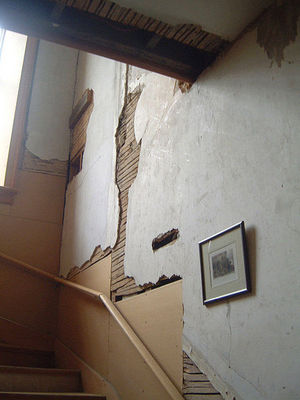Dwarf conifers are smaller, interesting variations of the stately Georgia pine, blue spruce, cedar trees and other large cone-bearing evergreen tress and shrubs. The dwarf varieties offer more flexibility for planting in small outdoor spaces, plus they attract a multitude of birds because they offer the top three things birds need most; food, shelter and nesting sites. Ranging in size from low-growing ground covers to 10-15 tall trees, dwarf conifers also offer year-round landscape texture and color, with some species changing color in the fall along with their deciduous counterparts.
How Small is Dwarf?
Dwarf is a relative term when it is used to describe small scaled conifer trees. A dwarf conifer will grow slower than its counterpart and not reach the height of a Georgia pine, but the mature size of a dwarf conifer ultimately depends upon the climate and soil conditions in which it is planted plus the characteristics of a particular species.
Planting
Visit your local nursery for help in selecting dwarf conifers that are best suited to your hardiness zone and your particular landscape needs.
Conifers can be planted anytime the ground is not frozen, with the best planting time being in the cool fall weather. Select a planting site that receives sun most of the day (a little shade from the afternoon summer sun is appreciated by these trees) and has well-draining acidic soil. Adding pine needles or mulch on top of the soil after planting will provide the trees with the needed acid for the first year, after that they will meet their own acidic needs when they drop their needles. After planting, watering in and mulching, these trees require no care, but can be trimmed and mulched for aesthetic purposes if desired.
For the Birds
If attracting more birds to your landscape is one reason you are considering planting dwarf conifers, try some of these top picks for the birds.
* Creeping Juniper – Ground cover with bright, golden-yellow foliage that turns deep plum in the winter. Bares berry-like cones and is hardy in zones 3-9.
* Dwarf Canadian Hemlock – Low growing habit and spreads via cascading branches. Provides dense ground shelter and food for ground-feeding birds like the juncos. Hardy in zones 4-8.
* Dwarf Colorado Spruce – Starts life as a dense blue mound and grows into a 5 foot tall blue pyramid when mature. Hardy on zone 3- 8 and is a favorite of chickadees and grosebeaks.
* Dwarf Korean Fir – Grows in a nesting pattern and reaches a mature height of 3-4 feet. Hardy in zones 4-6.
* Dwarf Mugo Pine – Provides dense, dark green foliage and exceptionally slow growth, taking 10 years to reach its mature height of 3-5 feet. Hardy in zones 2-7.
* Golden Eastern Arborvitae – Goldish-orange globe-shaped conifer that takes 10 years to reach its mature height of 4 feet. Hardy in zones 4-7.
* Sawara False Cypress – Silvery-blue foliage with distinctive curly needles. Grows into a pyramid shape and reaches a mature height of 5-8 feet. Hardy in zone 4-8.
Sources:
Fine Gardening
Birds and Blooms







